This post was originally published in the 1800’s Housewife daily newsletter, on January 13, 2023. Not on the mailing list? You can join here to receive the daily recipe and cooking notes straight to your email.
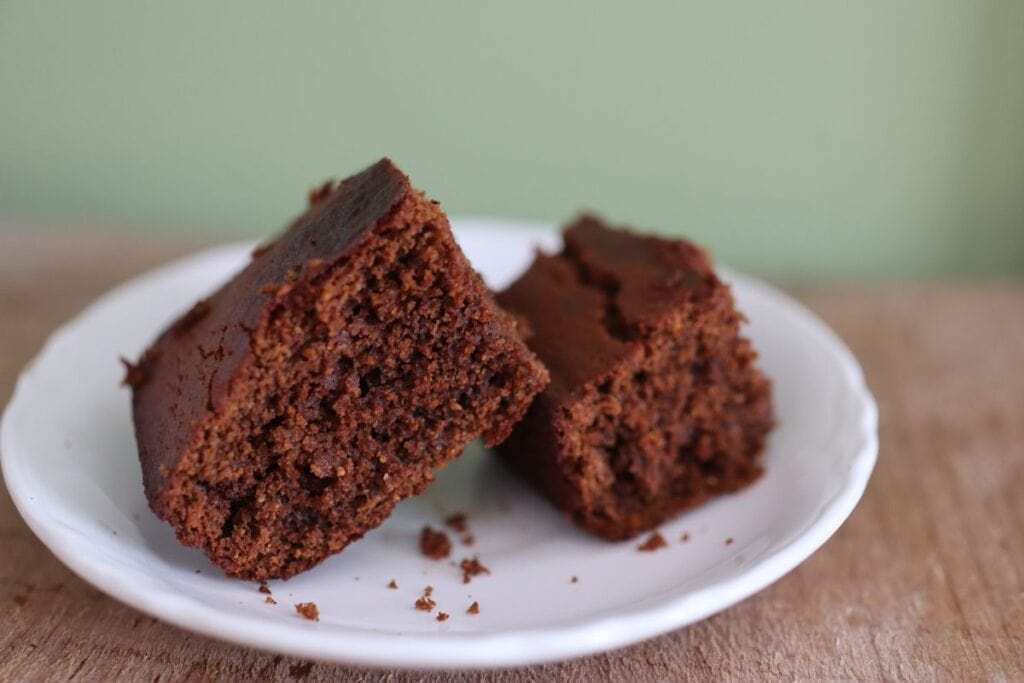
Hey there, all –
Are my children the only ones who come home from school absolutely ravenous? No matter how full I pack their lunchboxes, those little ones could just about eat their way through half the pantry, it seems.
Yesterday I had this soft, delicious gingerbread ready to surprise them with, and wow, did they love it. It’s similar to Miss Parloa’s gingerbread recipe, but I slightly prefer the lighter texture of this one. It’s a keeper, for sure.
~ Anna
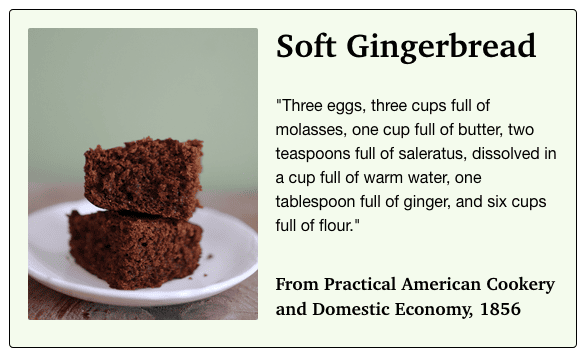
Here’s a photo of the recipe as it appears in the cookbook:

As with many 1800’s cookbooks, you’ll notice how some key pieces of information that we’re used to relying on, seem missing.
For example, “What temperature should the oven be? What type of pan should be used? Should it be greased?”
Here are a few suggestions that may be helpful if you make this (and I DO hope you make it, because it’s delicious!
Cooking Notes:
BAKING TEMPERATURE
Having made quite a lot of recipes from these nineteenth century cookbooks, I’ve found that gingerbread tends to be baked in a “medium quick” oven…so a little on the hot side.
I set my oven to 370°F when baking this, and felt the results were about perfect. You’ll know the gingerbread is done when the top just starts to darken, and a toothpick (or broom straw if you’d like to be authentic) comes out clean.
SALERATUS
The short answer here is that you can simply use common baking soda in place of the saleratus in this recipe. (Some suggest substituting each teaspoon of saleratus with 1¼ teaspoons of modern baking soda, others use equal measures. I used the 1¼ substitution for this recipe).
A longer answer is that about the time this cookbook was published, the products marketed as “Saleratus” were slowly changing over from potassium bicarbonate (still used as a baking soda alternative today), to sodium bicarbonate–today’s baking soda. Both are still in use for helping baked goods to rise. But it’s sodium bicarbonate that has become our modern kitchen staple, the leavening agent known as “baking soda.”
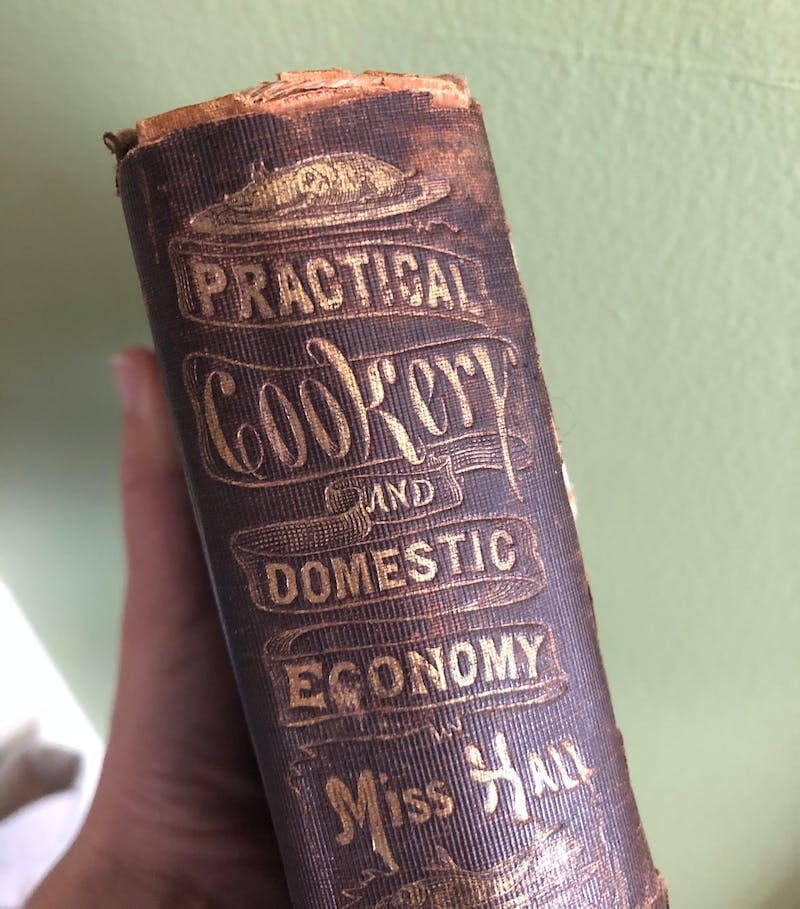
WHAT PAN TO USE
1800’s gingerbread was generally made like a thin cake, rather than a deep cake or loaf. Some contemporary recipes specify that the batter should be no more than an inch deep, and this seems to have been customary for baking soft gingerbread (as opposed to hard gingerbread which was very thin and well, hard.)
So choosing a large enough pan to allow you to make this like a sheet cake is a good choice. Definitely grease the baking pan well.
SCALING THIS RECIPE
This is a pretty generous recipe, suitable for a large family or church potluck. For a smaller family, it works really well to scale this recipe down, using ⅓ of all the listed ingredients. If you do this, it cooks very nicely in a 13×9″ pan, and takes about 20-22 minutes to bake.
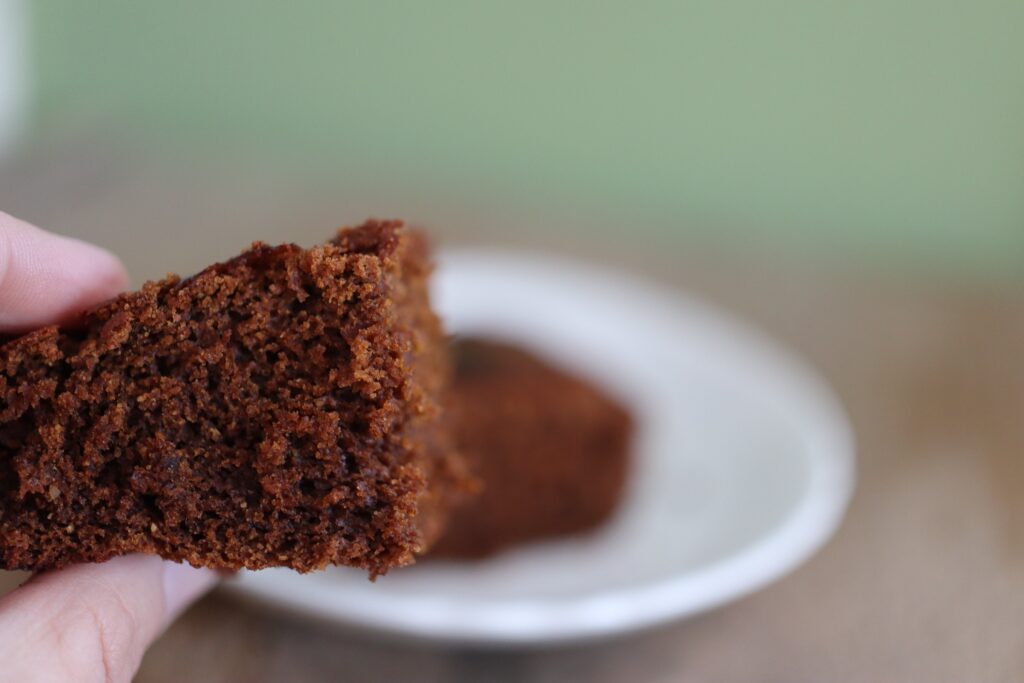
Keep your eyes open tomorrow for a tasty hot chocolate recipe from 1877. With the snowstorm coming, a steaming cup of something delicious sounds like just what we might need! Until tomorrow, ~ A
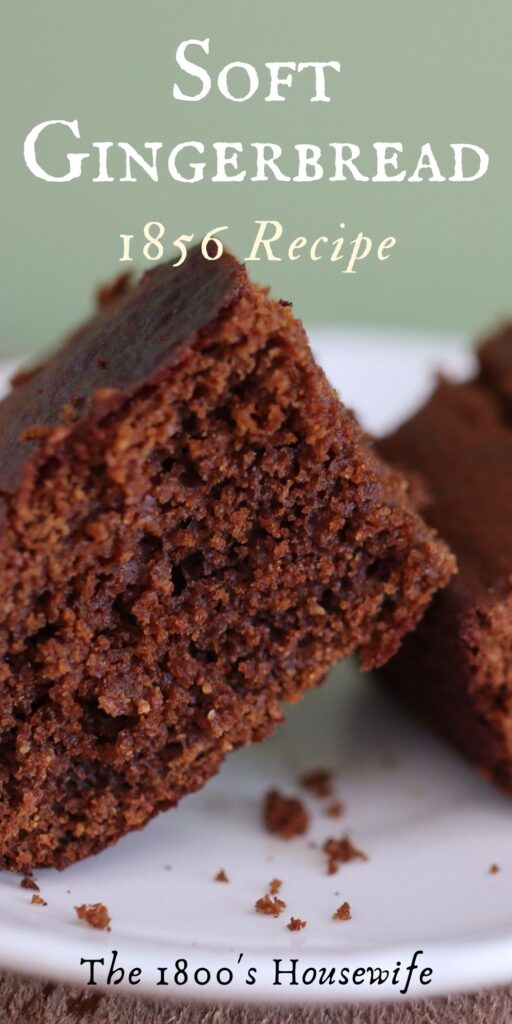


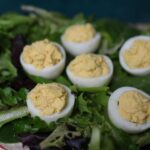
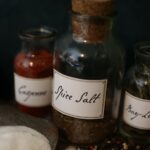
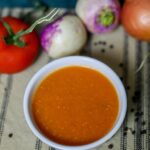
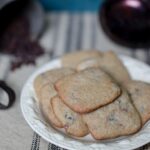
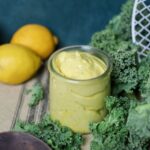
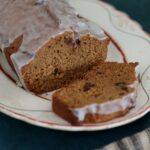

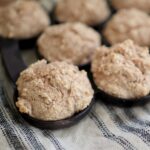
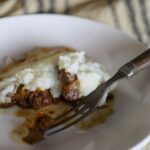
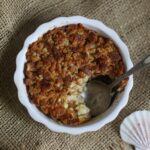
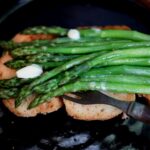
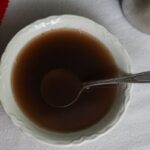
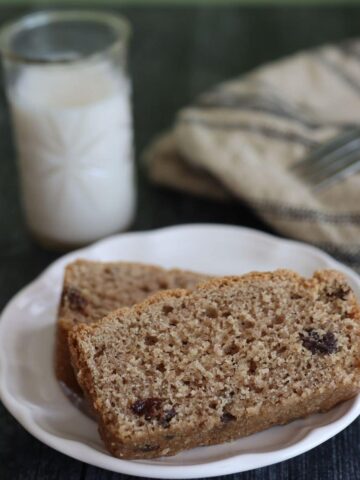
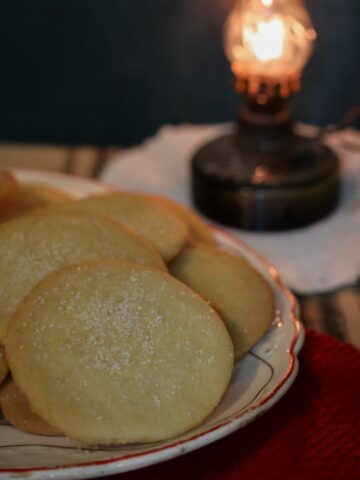
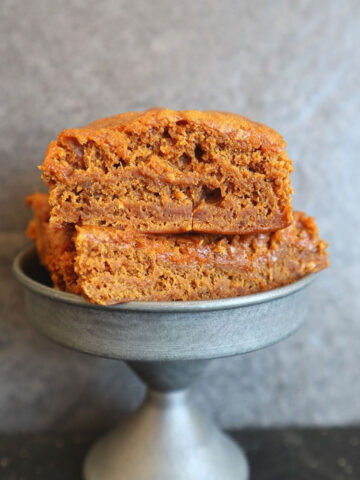
Colleen G says
I just made this last night. And can I tell you, my whole house smells wonderful! I’m taking this to the office tomorrow. I’m sure everyone there is gonna love it too!
Anna says
Oh, I’m so glad to hear it! There’s NOTHING like the smell of gingerbread baking!
Christine says
I love this simple recipe for gingerbread! Just seven ingredients — three dry, and four wet — which come together so quickly and easily for a delightful dessert from a bygone era! 🙂
I first made it just for ourselves, because I was experimenting with using almond flour in place of wheat flour, since we follow a grain-free diet. It turned out so well, that I made it again and brought it to a dinner we were having with friends, and they loved it as well! And I just made it for the third time. It’s in the oven baking, now, as I write this. Our grandson is coming to visit tomorrow, and we thought it would be a nice dessert to share with him.
This is my method — First, I line an 8” x 8” Corning Ware baking dish with unbleached parchment paper. Then, put 1/3 cup of butter, cut into smaller pieces, into a large mixing bowl, which I put in the oven, and turn the oven on to preheat, 370° convection bake.
Put the three dry ingredients into a shallow mixing bowl — 224 g extra fine almond flour (2 cups), one rounded teaspoon of ginger, and 1 scant teaspoon of baking soda. Mix well with a fork, pressing out any lumps.
By now, the butter will be melted, or at least partly melted. Remove from oven and whisk until all is fully melted. Add 240 ml (one cup) of molasses, and whisk into the butter. Whisk 1/3 cup water into the molasses mixture. And finally, add one egg and whisk well. Add the dry ingredients to the wet. Mix with a silicone spatula, and spread gently into the parchment-lined pan. Bake 35 minutes. The gingerbread will have started to pull away from the sides of the pan.
Cool in the pan, on a rack, for 1/2 hour. Then, gently and quickly, lift the parchment paper with the gingerbread out of the pan and onto the cooling rack, for further cooling. I find this keeps moisture from building up underneath the parchment paper. When you are ready to cut the gingerbread, you can slide it with the paper onto a cutting board. This 8” x 8” gingerbread makes nine, nicely-sized pieces. We like to serve it with whipped cream made from organic, grass fed heavy cream.
Anna says
Oh I just love your detailed notes! Thanks so much for sharing your method, and how you make it grain-free! It really is such an easy and enjoyable little recipe, isn’t it?